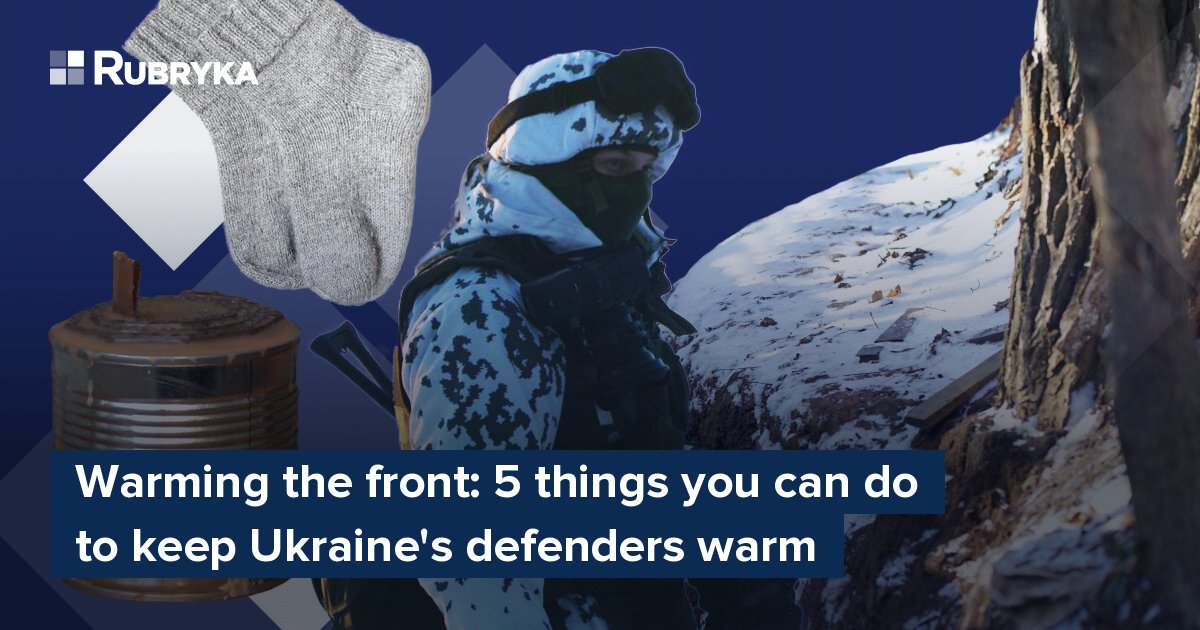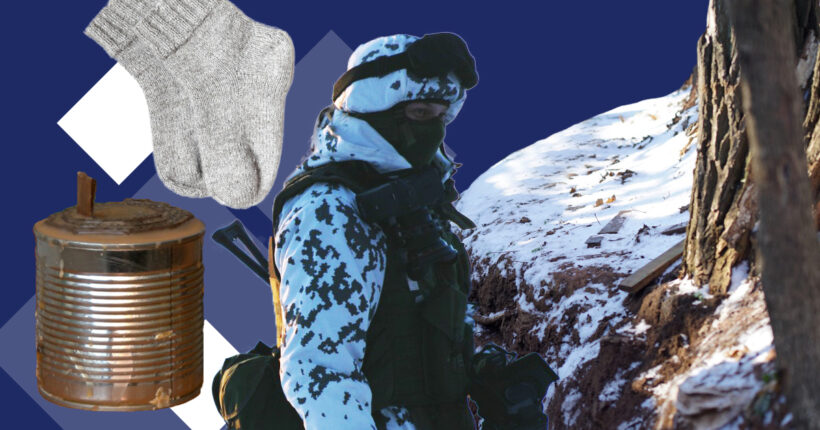
What is the problem?
Winter is coming
It's getting colder every day. The lower the temperature, the more our soldiers need warm clothes and ways to warm up. It is damp and chilly in the dugouts and trenches. Ukraine's Ministry of Defense assures that the topic of providing Ukrainian defenders with winter equipment will soon disappear from public discussion, and they will resolve the issue in a few weeks. Orders for warm clothes are already being sewn. Western partners also promised to help Ukraine with this issue. But each of us can help make our defenders a little warmer.
What is the solution?
Send some warmth to Ukrainian defenders
While the issues with tailoring and logistics are being resolved at the highest level, volunteers have tasked themselves with supplying warmth to the Armed Forces of Ukraine—buying clothes, jackets, sleeping bags, and tents. Each Ukrainian can also join in and send a piece of warmth to the Ukrainian defenders by making simple things with our hands that can warm and strengthen our defenders in bad autumn weather.
How does it work?
Making trench candles
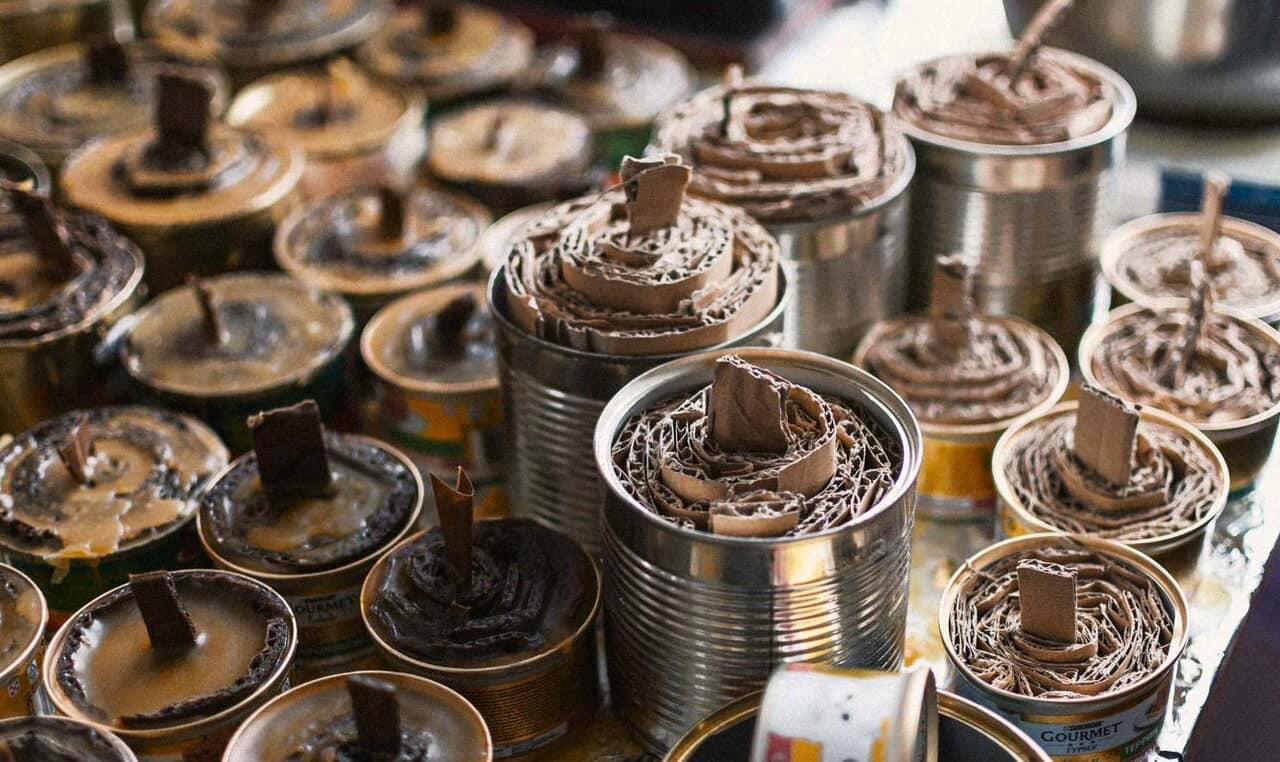
Trench candles are necessary on the front lines. The wind can't easily put out such a burner, and it's not afraid of moisture, fits easily in a pocket, and can be ignited more than once. The thing is excellent, cheaper than gas canisters, and doesn't require additional accessories. The soldiers can illuminate a trench or a basement thanks to a candle, warm themselves, light a fire with raw firewood, dry clothes, and prepare tea or soup.
It's not difficult to make trench candles at home. For this, you need:
- paraffin, wax, or the leftovers of any candles,
- three-layer corrugated board,
- food cans.
- Three-layer cardboard is cut into strips slightly lower than the height of the can, twisted with "honeycombs" upwards, and then placed in the can. In the empty spaces, you can insert "additions"—pieces of the appropriate size.
- Candles are melted and poured into prepared cardboard containers in two stages. It is convenient to do this with a ladle or to melt candles in an old teapot and pour them through the spout. Be careful not to burn yourself! If you melt a lot, use a respirator.
Any tins for trench candles are suitable—from the smallest (cat pate, caviar) to coffee cans. It's best if the can container is no higher than 5 cm outside. This way, the wax or paraffin will burn to the end, and the candle will be practical. You can cut large cans in height.
A small can (80 g) will burn for about 1.5 hours. Large (200-400g) will last approximately 6-8 hours. The best candles come in sardine tins, burn well, and produce an intense flame. It can heat a liter of water in 24 minutes.
WARNING! Beverage containers are not suitable for making candles.
Where to get cans and candles? Ask friends or acquaintances, and organize a gathering in your yard or at work. Offer pet stores to supply feed tin containers. Arrange with churches to give candle leftovers.
There are usually no problems with cardboard. If you don't have a stack of empty boxes on your balcony, they're easy to get at the post office and grocery stores. The cardboard must be completely dry.
Did you collect a lot of material and not have time to process it quickly? Share with the makers in your neighborhood. The candles will be with our defenders faster.
Sewing buffs
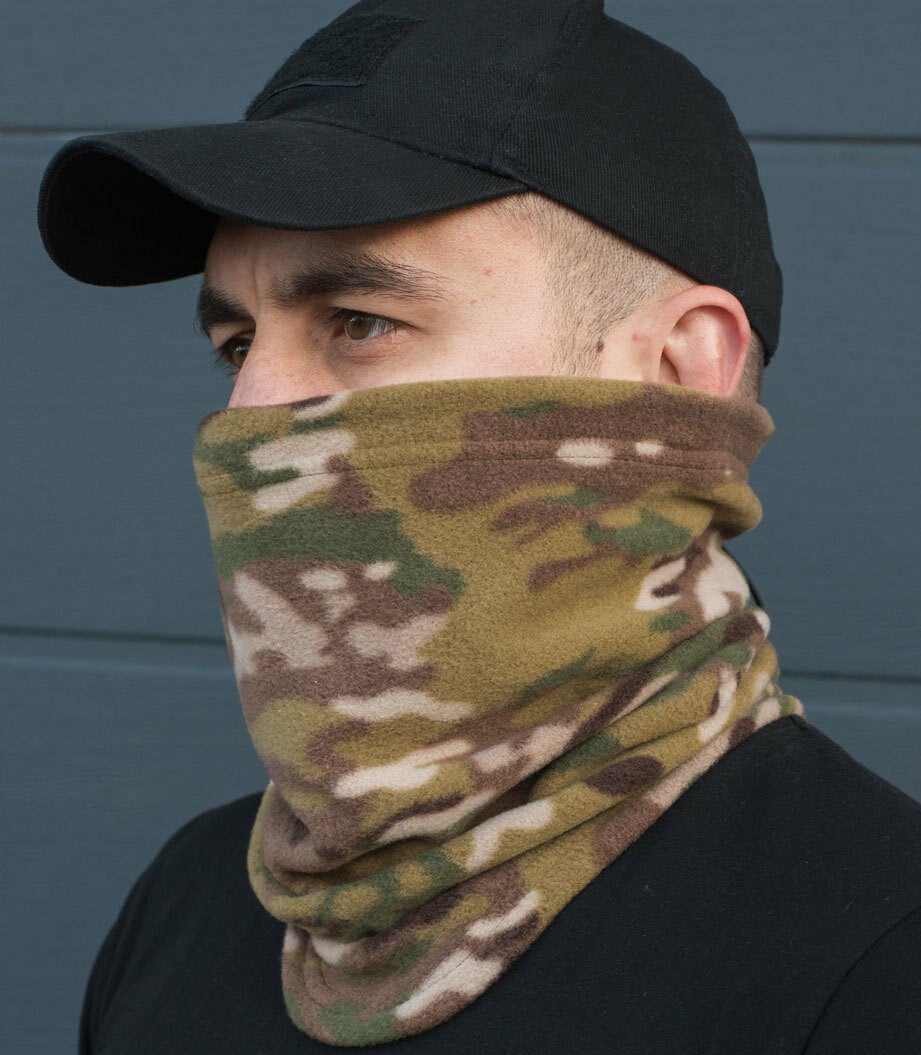
A buff or a multi-bandage is probably the most multifunctional accessory with many practical options: it can be worn as a scarf, face mask, bandana, hat, headband, and other types of headwear. They were developed mainly for sports, and now this convenient accessory has also become popular among the military.
To sew a buff literally in 5 minutes, we will need a 50×50-cm piece of knitwear. The buff must be made of a fabric that allows air to pass through easily and dries quickly. Fleece is a perfect choice. But a buff sewn from thin synthetic knitwear will warm your neck and protect your face from wind and snow.
- We place the fleece so that the base thread runs vertically. That is, the material should stretch more in width than in height. We fold the fabric in half along the base thread.
- We lay the connecting seam. Having an overlocker in your arsenal is good, but you can stitch with a regular zigzag machine. It needs to be unfolded and stitched to strengthen the seam without chafing.
- The last step is to turn out the tube scarf and make two zigzag seams. To do this, you need to bend the upper and lower edges inward by 1.5-2 cm and stitch, slightly stretching the fabric. Voila, the buff is ready!
Are you not new to sewing and can sew more complicated things for defenders? Look for volunteers in your city or on the Internet who are engaged in sewing clothes for the Ukrainian Armed Forces (for example, an entire Sewing Company is currently working in Dnipro, you can join it from other cities and even from abroad). You can hand ready-made products to the front through sewing volunteer communities; they can help with patterns and finding materials.
Knitting socks
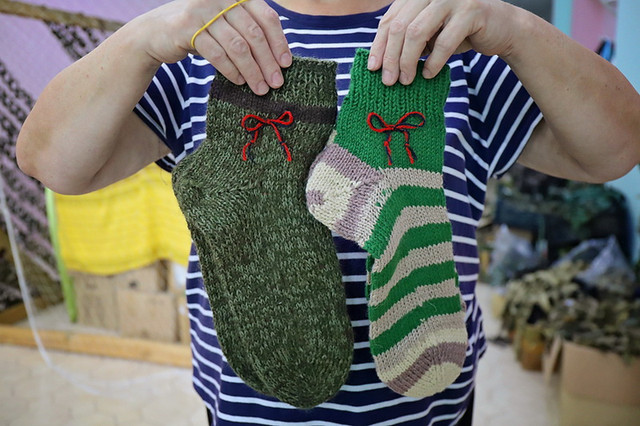
Military socks are consumables. They cannot wash them in the trenches, so the socks from the store are often disposable: the military wears them as long as possible and then throws them away. Hand-knitted socks have a different purpose: when the soldier has time to rest or sleep for an hour, they can change into warm socks, taking off the shoes from the feet, which could freeze and get wet during the day.
Where to get threads? Of course, you can buy them in a store, or you can disband old sweaters, which are in almost every home. You can involve relatives, co-workers, and even elderly neighbors in knitting socks; older women often know how to knit.
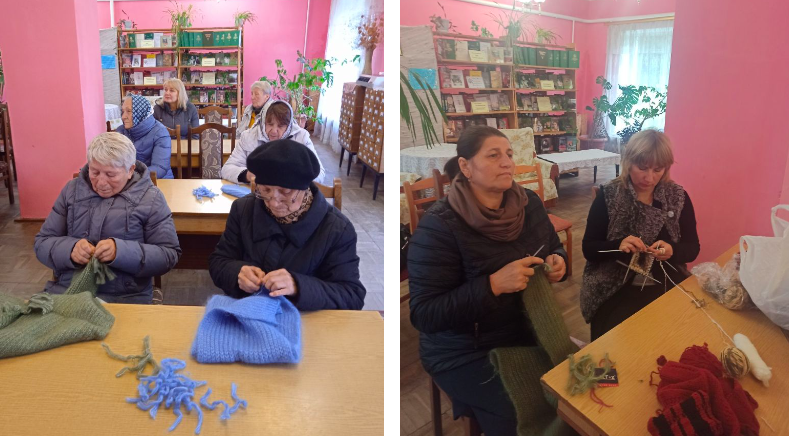
For example, in the Volyn region, in the village of Ivanychi, women united to knit socks for soldiers at the front. A local volunteer, Olha Kidyba, joined them. She has been knitting socks for the military for eight years and handed over one and a half thousand pairs to the front line in the meantime! Now, together with her fellow villagers, she continues to do good deeds. After all, it is more fun, and the group can do much more than one person.
In Zhytomyr, the volunteers announced the campaign Socks For The Military. Anyone can join the initiative and warm up the defenders—you don't necessarily need to know how to knit socks. You can bring warm woolen threads. And those who know how to knit socks can take the yarn home and knit a warm pair of socks for the Ukrainian forces. Those willing to help and knit socks for our defenders are invited to the local administrative services center: str. Mykhailivska, 4.
A large community on Facebook knits warm things for the military. The volunteers created the project Knitted Things For Soldiers back in 2014. Today, the project unites those who want to help our defenders: more than 1,000 community members knit and send hats, balaclavas, socks, gloves, and other warm things for our soldiers to the Ukrainian Armed Forces. They will teach you how to knit and help you hand ready-made items to the front.
Drying vegetables

Often, to warm up, you need to eat something hot. The faster, the better.
The Kropyvnytskyi initiative Feeding Patriots produces dried sets for quick soups and borschts for the Ukrainian Armed Forces. They openly share the recipes developed in 2014 and the secrets of drying vegetables so that anyone can implement such an initiative anywhere in the country.
If you have a dehydrator, get down to business! You can also dry vegetables in the oven.
How to dry potatoes:
- Wash and peel the potatoes.
- Cut into slices (you can use a shredder).
- Wash in cold water.
- Depending on the variety, throw in boiling water, and cook for 3 to 8 minutes. Potatoes should be slightly undercooked.
- Wash again in cold water.
- Spread in one layer and dry in the oven or dryer.
How to dry beets or carrots:
- Wash, peel.
- Grate on a coarse grater.
- Put it in the tray tightly, but in one layer, to the dryer.
- You should perfectly dry all vegetables. There should not be a single wet piece.
- Carrots are dried for 4-5 hours, and beets need for 6-7 hours
How to dry cabbage:
- Shred it, but in slightly larger pieces.
- Spread in one layer. Everything should be arid.
- It is better to dry in a private house, where the premises are well-ventilated at low temperatures (70-80 degrees) for at least 5 hours.
How to dry onions:
- Finely cut into strips.
- Dry at low temperatures in the dryer for 5-6 hours.
Also, this organization has a Telegram bot that will help you create such a volunteer movement and give you many helpful tips (@goduemo_bot).
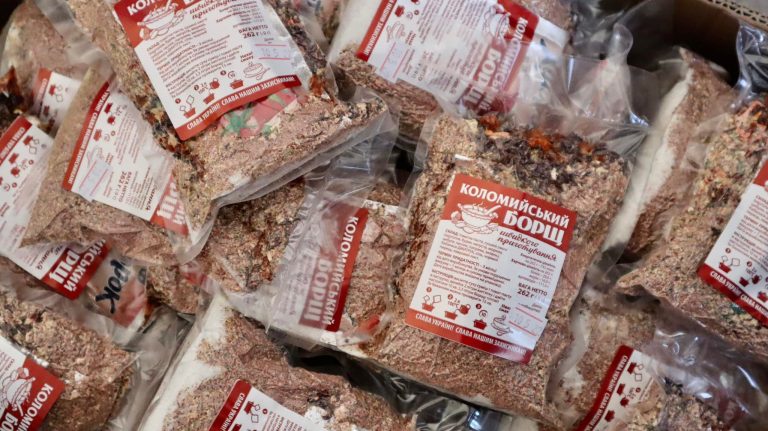
The Carpathian volunteers devised a way to speed up the process of making soup many times over. Add boiling water—this is the secret of the Kolomyia borscht transformation into a nutritious first course. The recipe was developed and manufactured in Kolomyia by Hanna Yankovets, a native of Donetsk. After all, the soldiers do not always have the conditions to cook something "from scratch."
How it works: some of the ingredients included in borscht are ground. Thanks to this, cooking takes from 5 to 15 minutes. You need to pour boiling water over the mixture and let it infuse.
Preparing anti-cold mixtures
"When such parcels arrive at the front, we all remember our home. Mother's and grandmother's home remedies are a real cure-all. They convey the warmth of the hands and the care of our women," this is what Ukrainian defenders say about the vitamin mixtures sent to them to the front.
Vitamin mixtures, which must be diluted with boiling water, help to warm up in the cold season, maintain immunity and sometimes recover faster.

Lemon-ginger mixture
- 250 g of peeled ginger,
- 250 g of lemon with peel,
- 500 g of honey.
- You can grind products in various ways, but passing them through an electric meat mincer is best.
- If you don't have a mincer, you can grate the ginger and cut the lemon into small slices.
- Add honey to the mixture and mix well.
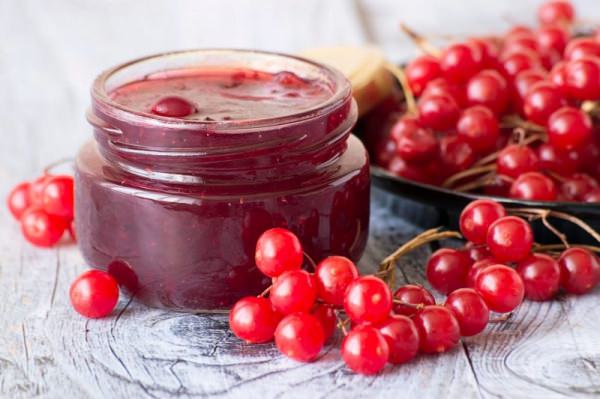
Viburnum with sugar
- 500 g viburnum
- 500 g of sugar
- Viburnum berries are usually collected after the first frost when they become not bitter. Prior freezing will help to neutralize the bitterness of berries in autumn.
- Sort viburnum, wash and separate from twigs.
- Crush the berries and grind them in a bowl: you need to release as much juice as possible where the sugar will dissolve.
- You can use a blender or a meat mincer.
- Combine with sugar, mix well and pour into jars or bottles.
Bonus: warm pictures
Children can join a good cause not only as assistants in the home workshop or the kitchen. Children's drawings and comforting words are sincerity, care, and love that warm, inspire, encourage and support the spirit of Ukrainian soldiers.
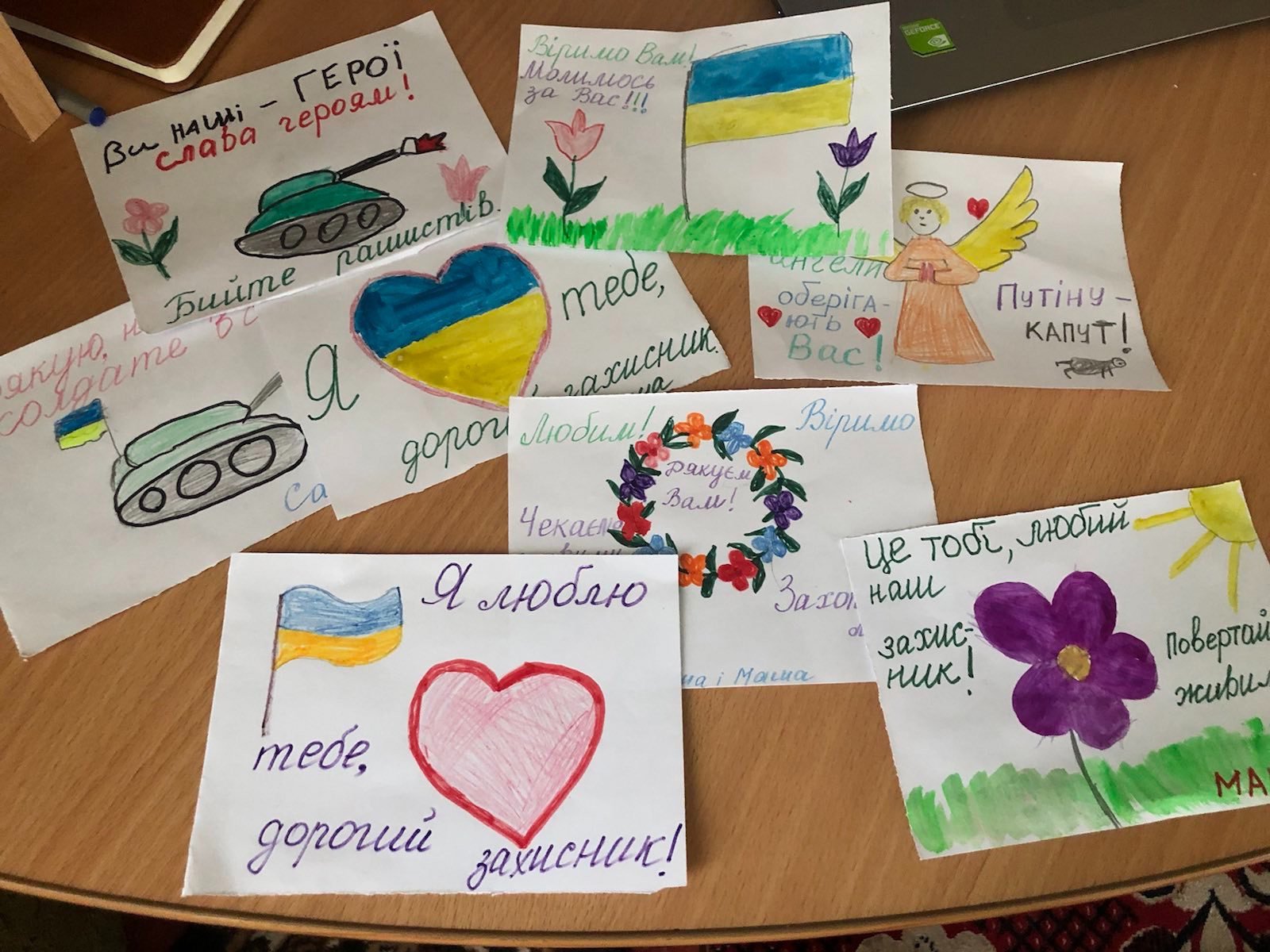
Even more helpful solutions!
How to hand over some warmth to the front? Volunteers know best about the needs of units on the front lines and beyond. Large volunteer organizations and local centers will guide and help you, so contact them first.
How to find volunteers? It's very simple! The Volunteer Platform is an online resource that collects volunteer opportunities from all over Ukraine and helps individuals or entire organizations find activists to help.
It is also easy to find self-organized volunteer associations. Those who are actively involved in helping write about their activities on social media and call people to join.
Pay attention to the posts/stories of people you trust. They often post links to those they have worked with, even if they are small organizations. Ask your friends about who they know: today, people are the best source of information. You will quickly find the contacts you need.
Newsletter
Digest of the most interesting news: just about the main thing



